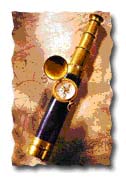

|
|
Introduction to Primary Sources What are primary sources? How and why would we use them in teaching and learning? This activity is designed to help teachers and students understand the difference between primary and secondary sources. With this knowledge, you can create your own primary source material for future generations to uncover.
Secondary Source are created by someone either not present when the event took place or removed by time from the event. Examples of secondary sources include textbooks, journal articles, histories, and encyclopedias. |
|||||||||
 |
Using Primary Sources in the Classroom Suggestions and ideas for using primary sources in the classroom. This is a must read for every social studies teacher. |
||||||||||
 |
Meet the Curators Watch these short videos from the Library of Congress American Memory Fellows Summer Institute from 2001. Many of the artifacts on the Internet are in raw format without any supporting information. Since primary sources are fragmentary, students may not relate to these bits and pieces. This is when interrogation techniques can be employed where students ask questions on their own terms and begin to make sense of the artifacts. Let's take a peek behind the scenes at The Library of Congress in the Prints and Photographs Division. Maricia Battle, Curator Balloon Prints View this clip as Rosemary Plakas, Curator in Rare Books and Special Collections at The Library of Congress tells the story about this pattern for slippers. Hospital slippers
for the sick and wounded soldiers of the Union Maps also provide us with much more than geographical perspectives. Some maps are considered pieces of art, others provide us with all sorts of information like names of residents, and still others show military battles. Learn about powder horn maps from Patricia van Ee, one of the curators in the Geography and Map Division at The Libary of Congress. She also describes a creative use of maps by a former merchant. |
||||||||||
 |
Activity: Examine the photographs below. Answer these questions: • When was the picture taken?
|
||||||||||
 |
|
||||||||||
 |
How Long is this Adventure? In one or two class periods, you could complete the Introduction to Primay Sources or Analyzing a Primary Source. You could extend the lesson by using primary sources throughout the school year. |
||||||||||
|
|||||||||||




